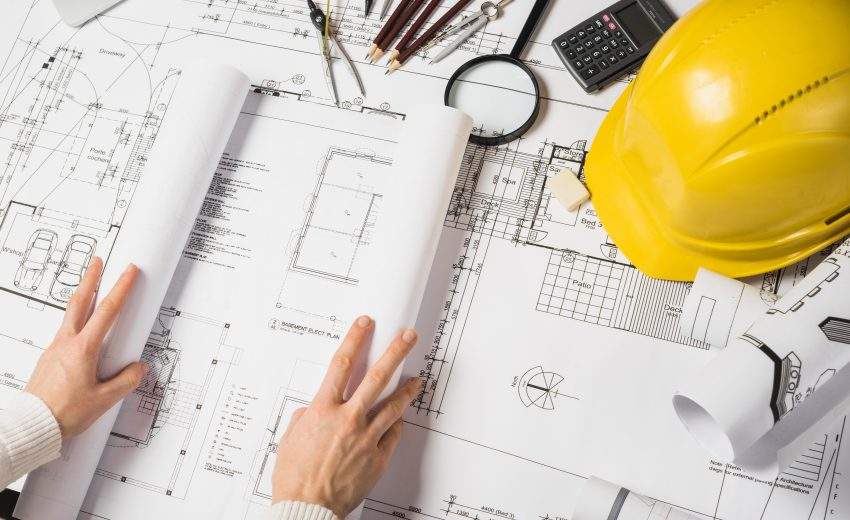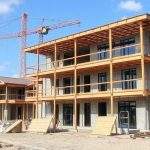
As we schedule for 2025, the UAE construction industry is preparing for a real paradigm shift driven by: technology adoption, sustainable measures, and a long-term national ambition found in initiatives such as Vision 2030 and Vision 2050 and the legacy of COP28. Nothing should be considered unimportant when AED 16 billion has been allocated for upgraded road infrastructure across Dubai and an anticipated $54.5 billion investment in logistics by 2030. The UAE construction industry is not following global trends, instead is setting them. Top Construction Trends in the UAE for 2025 highlights an industry being influenced by innovation, collaboration, universal change, and a commitment to a future-proof built environment.
1. Mega-Projects: The Heartbeat of Diversification
The UAE continues to lead with both scale and ambition. Dubai’s AED 16 Billion Main Roads Plan has 22 key strategic projects, which will directly improve mobility for a population over six million. On a national level, the operational Etihad Rail freight network is a representation of a larger transformation to logistics and industrial connectivity – allowing for direct and on-demand cargo done efficiently every hour of the day and night across the country.
Adding to this, the national logistics strategy is targeting AED 200 billion in total annual revenue by 2030. Of note, Duba South and KIZAD now contain AI-enabled warehouses and “smart zones” and “Operation 300 Billion” is facilitating growth of the industrial GDP with “fast track” factory zones targeting aerospace, pharmaceuticals and others.
At the same time, cultural and tourism megaprojects including the Jebel Jais luxury resort and the Guggenheim Abu Dhabi, continue to develop the UAE’s AED 100 billion tourism pipeline and reinforce the UAE’s diversified economic model.
2. Digital Construction: Smarter, Faster, Safer
The emergence of AI and automation increases (and changes) the way we design and carry out projects. There are now AI engines that can predict material delays with 92% accuracy, which means we can optimize crane schedules and decrease idle time by as much as 35%. Generative design will also enable engineers to create designs that use 20% less material, as well.
Digital twins and 5D BIM are also becoming the standard. The Al Fay Street project in Dubai is preparing for several IoT sensors to on the structure and energy usage in real-time, enabling predictive maintenance and improved lifecycle management. Drones, along with AR helmets, are enhancing workflow on site and reducing the amount of rework by 18%, while construction is proceeding with more precise installation.
3D printing is also maturing with Dubai shooting for 25% of new buildings to be 3D printed by 2030. By using 3D printing, we can create everything from façades to structural components. Automation not only will reduce injuries and fatalities, but it will also allow for designed and form freedom.
3. Sustainability: From Mandate to Mindset
Green construction in the UAE is going well beyond regulatory compliance. In Masdar City Phase 2, passive cooling and solar integration, reduces energy use by 40%. Estidama Pearl 3 rating ensures new buildings in Abu Dhabi achieve water savings of at least 35%.
Circular materials are already have a bigger presence. Al Ain Cement Company is using recycled CO₂ to make carbon-neutral concrete, and Dubai Industrial Park now boasts factories that recycle construction waste into reusable materials such as insulation boards.
Resilience is built into the coastal developments through elevation and the use of salt tolerant materials, where smart grid enabled neighbourhoods, like Dubai’s Sustainable City allow benefits for sharing solar energy and further reduce dependence on fossil fuels.
4. Modular Methods: Precision Meets Speed
As modular construction makes faster strides forward, it brings speed, cost, and sustainability advantages. The successful projects – the CitizenM Hotel in Dubai Marina – have been built in 50-60% less time. Modular schools and residences are creating 70% less construction waste, while hybrid high-rises that combine conventional and prefabricated parts are being constructed with tolerances of 0.5mm.
5. Luxury and Livability Redefined
In exclusive areas, properties like Binghatti Ghost and Orla on Palm Jumeirah command over $3,000 per square foot and are a combination of iconic architecture and digital accessibility, including NFT-based access. Branded residences with concierge services are changing the definition of urban luxury.
Meanwhile, 15-minute communities such as Dubai Hills and Reem Central prioritize livability. From VR-enabled coworking spaces to AI-driven clinics and pedestrian-first design, these developments create essential services at walkable distances, which is particularly important in city living.
6. Navigating the labor and market landscape
With inflation predictions between 3.5% and 4% and a 30% skills shortage in digital roles, workforce development is among our top of mind priorities. CTF UAE 2025 is tackling this by developing an offering for 12,000 annual trainees centered around green construction and tech-enabled skills requirement. In-demand roles include BIM managers, drone operators, and carbon auditors.
Supply chain resilience is also building with local sourcing and blockchain tracking, aided by initiatives like “Make it in the Emirates” and the DMCC.
7. Looking Ahead: A Global Template
With a forecasted 4.8% CAGR to be AED 242 billion by 2029, the UAE’s construction sector has a strong growth trajectory. PPPs are supporting infrastructure, while Integrated artificial intelligence facility management, 4D-printed parts, and green hydrogen hubs indicate a future that ensures innovation and sustainability. As Dr. Ahmad Al Mulla, Director of the Future Cities Council states, “The UAE is no longer simply a consumer of construction innovation but is now also an exporter”.
Here at Charminar we are proud to be part of this journey toward transformation – structuring not just buildings, but the future.
Final Thoughts: Building Tomorrow, Today
The UAE will not only transform its construction landscape by 2025, it will also establish a new global benchmark. With mega-projects, modular innovation, AI inspiration, and circular sustainability already in progress, construction is entering a bold new era showing a quality of life driven by intelligence, resilience, quality, and sustainability for all.
At Charminar, we welcome these changes not as challenges, but as opportunities to advance with purpose, precision and performance! We are participating to position the nation’s vision and deploy advances in technology to create smarter, greener and more human-focused cities.
The future of construction is already upon us – it is being built today, in the UAE!







